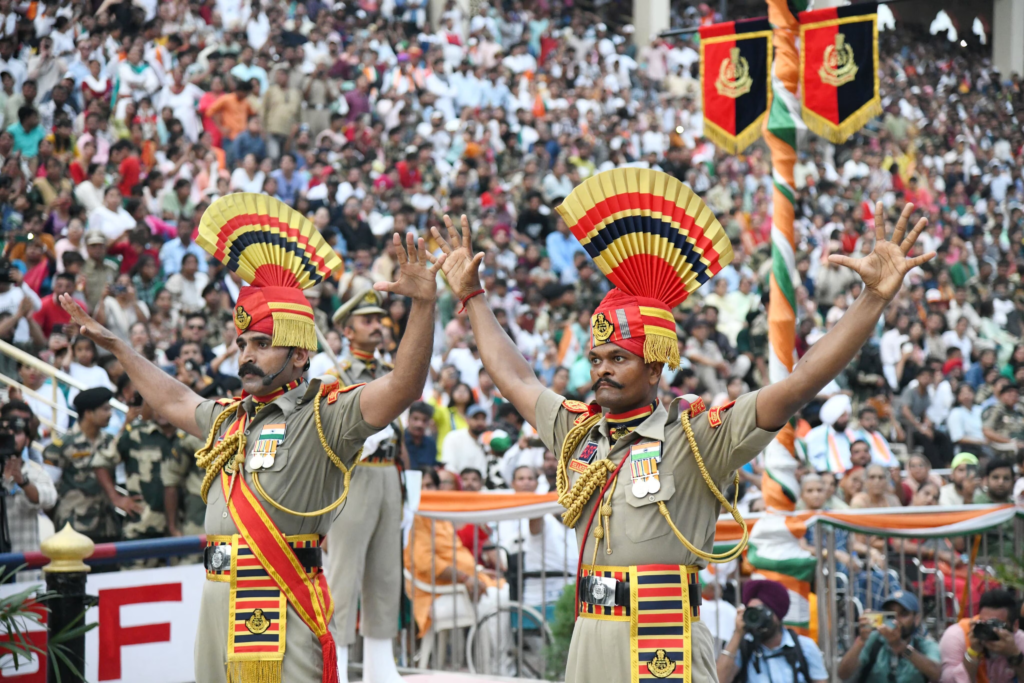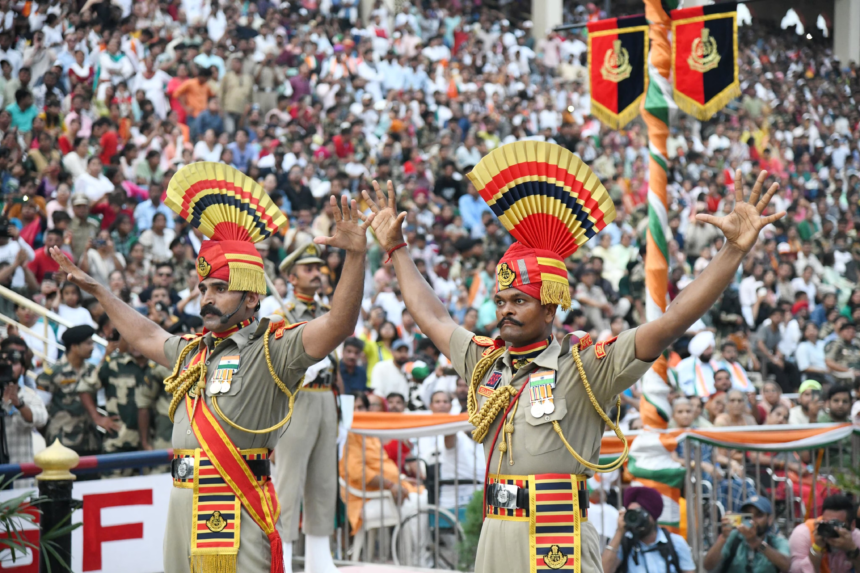Introduction
The recent Pahalgam attack has intensified existing Pakistan-India tensions, casting a shadow over their traditional border ceremonies. Once a symbol of both rivalry and respect, the Wagah border ceremony now reflects the growing distrust between the two nations. Here are the top 7 signs the Pakistan-India border ceremony highlights a deepening rift following the attack.

1. Noticeable Reduction in Diplomatic Gestures
Historically, despite animosity, the border ceremonies featured coordinated salutes and formal handshakes. Post-Pahalgam, these gestures have diminished, replaced by cold stares and minimal interaction.
2. Heightened Military Displays
Both sides have intensified their military posturing during the ceremony. The stomping, aggressive salutes, and weapon displays now seem more threatening than theatrical.
3. Decrease in Tourists and Spectators
Border ceremonies were once tourist attractions. With the surge in violence and fear after the Pahalgam incident, visitor numbers have dropped drastically, impacting local economies on both sides.
4. Increased Security Presence
Security measures at the border have tightened significantly. Visitors must now undergo rigorous screenings, and additional military personnel have been deployed around the ceremonial grounds.
5. Media Narratives Reflect Escalation
State-run media outlets in both countries are highlighting the ceremonies as displays of strength, not camaraderie. Reports emphasize the hostile atmosphere rather than any mutual respect.
6. Diminished Cultural Exchanges
Cultural programs that sometimes accompanied the ceremonies, featuring music and dance, have been suspended indefinitely, further straining people-to-people contact.
7. Officials’ Rhetoric Grows Sharper
Leaders and military officials are using sharper language when referencing the border ceremonies. Instead of calling for peace, they emphasize vigilance and preparedness for escalation.
Conclusion
The Pahalgam attack has deepened the rift between India and Pakistan, with the border ceremonies now serving as a stark reminder of the growing divide. The once-celebrated show of choreographed rivalry has turned into a tense, uneasy spectacle. As tensions simmer, the world watches closely, hoping for diplomacy to eventually bridge the ever-widening gap.
Recommended Reading: India-Pakistan Tensions Escalate After Kashmir Incidents










